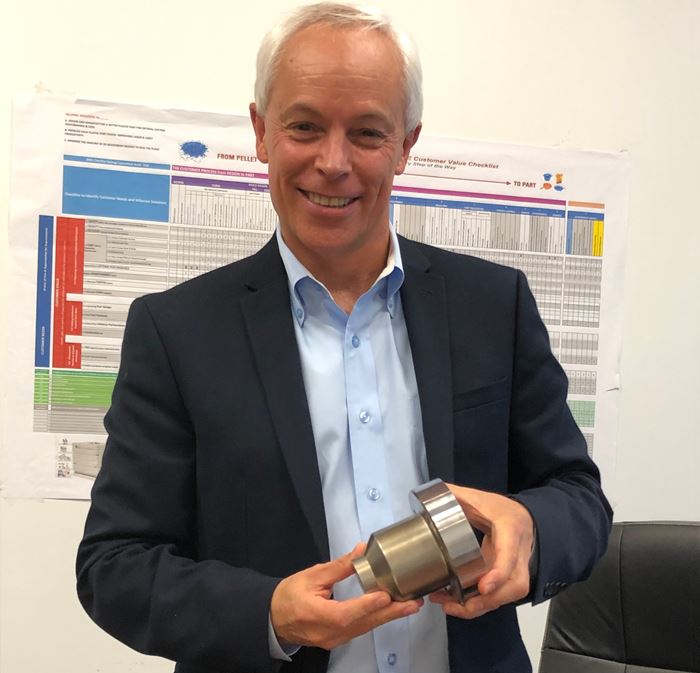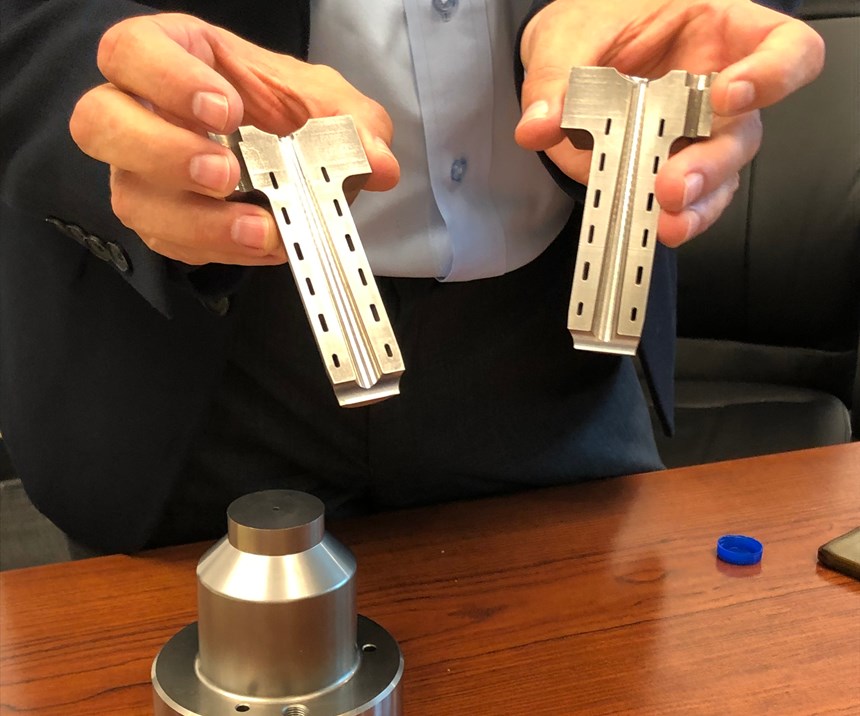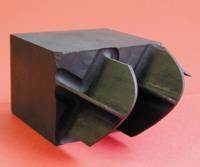DME Reconnects with North American Moldmaking Industry
MMT sat down with DME Company President Peter R. Smith to learn how the company has refocused its goals and objectives for serving the moldmaking industry.
While traveling in Michigan recently I had the opportunity to meet with Peter R. Smith, president of DME Company, at the company’s Madison Heights facility. I wanted to learn about DME’s new business strategies and how Smith and his team are working to recapture prominence as a supplier in the North American moldmaking industry.
My motivation stemmed from years past, noticing that DME was either not present or was represented only minimally at trade events where the company used to strike a prominent figure. For decades, everyone in the mold industry regarded DME as a leading supplier of standard mold bases and components. From its founding in 1942 by I. T. Quarnstrom as Detroit Mold Engineering (DME), the company grew into a successful, global operation. In 1996, DME was acquired by Milacron Inc. and over the years its presence gradually diminished. Many wondered what was going on. The company was still operating globally but it seemed like it was swallowed up by Milacron’s more dominant image.
A New Business Model
Fast forward to today and it is as if DME has been reborn. Smith briefly mentions the impromptu chanting of “DME is back” by several attendees during a networking party at the American Mold Builders Association annual conference held last May. The MMT team attended the conference and was in the hotel lobby when it happened and we could hear it loud and clear. “The reality is that DME is back, with a series of new and innovative solutions to support our industry,” Smith says. He acknowledges that the company hit a few bumps in the road, but says his team has rallied and re-energized. In fact, he says the company has spent the last decade restructuring so that it is once again its own entity and brand. “What we came to realize was that Milacron could be the strongest by having some very powerful brands, and so you will see DME come to the forefront again. That’s been the real change.”
New Customer Service Strategy
With the new business model giving DME autonomy came a new, dedicated website that is separate from Milacron’s and a new customer service mantra built on what Smith says has always been the company’s core principles. “The customer has always been central to what we do and so we start with the moldmaker that is our predominant account,” he says. “But we recognize that we have to be a servant to the whole value chain, and so with that we also recognize that we need to bring new innovations because we have to help our customers compete.” He adds that this is accomplished using three building blocks: Ease of doing business, innovation and speed.
Ease of Doing Business – Fast
Smith demonstrates DME's XPress Configurator module on its new website as an example of how the company is looking to make it very simple for moldmakers to obtain the products they need quickly and seamlessly. The Configurator function is part of DME’s larger eStore online ordering system, but is designed specifically for ordering mold bases (XPress A series and B series, XPress A series Stainless and Stainless Plus, and XPress A&B Series Plus) and corresponding components. “It’s not really a value added activity for the moldmaker, so the Configurator makes it possible to configure a mold base, get an instant price and place your order to get it delivered, in most cases, the next day.” Customers can use the Configurator function to obtain custom quotes instantaneously and save that grouping of products. If a job is won, that quote and the complete list of products are accessible and can be ordered by clicking “Add to Cart.” Products within the order can also be modified as needed before checking out.
The eStore itself is set up for convenience, offering customers the choice of “speed ordering” for those with part numbers at the ready who can input them and add everything at once to the cart, “quick ordering” for users preferring to build and validate a list of parts line by line, plus a more traditional module for ordering online. No matter how a customer chooses to use the eStore, all orders go directly into DME’s enterprise resource planning (ERP) system for processing as entered by the customer, saving time.
DME manufactures mold bases from facilities strategically located in the United States, Canada, Europe and India and Smith says that the imperial-based “DME standard” is used by customers across the globe for all product orders. “That’s a real strength because if you build a mold here and it is transferred overseas, we can trace that all the way through so customers are assured of the ability to access the right DME components from anywhere, quickly,” he says.
After being upgraded with a new user interface, the DME eStore is currently in the final testing stages. Smith says customers will find it even more user friendly than before because it simplifies the product search function and provides more critical product data. The company is expecting to launch the new interface in early September. In the meantime, customers can still order online using the current interface.
Innovation
In addition to a new website and customer service strategy, DME is also introducing new and innovative products like the CoolingCare Advanced Channel Cleaning Solution, which is designed to automatically pressure test molds to detect any mistakes in its assembly, check mold cooling channels for any blockages caused by scale or corrosion, diagnose any issues by measuring and comparing flow rates through the cooling channels and clean those channels using a patent-pending three step process. The system then alerts the user via a text or email as well as on the machine itself. All maintenance data is then stored in the CoolingCare database. “It's the first Industry 4.0 system that allows monitoring and maintenance of cooling channels throughout the lifecycle of the mold,” Smith says.
DME’s focus on mold cooling is not new. In 2017 the company announced its newly formed partnership with Linear AMS (a Moog Company) to offer metal 3D printed conformal cooling products to help improve productivity in the molding industry. The TruCool Conformal Cooling became the new DME line of products for mold cooling. They utilize a cutting edge, direct metal laser melting 3D printing process to produce highly complex cavities, cores, and components with conformal cooling channels. “We have a design service in-house and we can look at a plastic part, do a Moldflow analysis and computational fluid dynamics where we're basically modeling how the water is going to work within the design,” Smith says. “Based on the results we're able to calculate the right design and the right cooling solution to use.”
As this news report is being published, DME is preparing to announce yet more new product innovations including those from the company’s line of hot runner systems and components, and customers can expect DME’s website to continue to offer more, faster access to products from its eStore.
Related Content
Revisiting Some Hot Runner Fundamentals
What exactly does a hot runner do? If you’ve been in the injection molding industry for any length of time, you might think the answer is obvious, but it is not.
Read MoreFundamentals of Designing the Optimal Cooling System
The right mold components can help improve mold cooling and thereby produce higher-quality parts.
Read MoreTreatment and Disposal of Used Metalworking Fluids
With greater emphasis on fluid longevity and fluid recycling, it is important to remember that water-based metalworking fluids are “consumable” and have a finite life.
Read MoreAdvantages and Disadvantages of Copper and Graphite Electrodes
Both copper and graphite provide approximately the same end result, so it is important for a shop to consider the advantages and disadvantages of each material in order to discover what would work best in their shop floor environment.
Read MoreRead Next
How to Use Strategic Planning Tools, Data to Manage the Human Side of Business
Q&A with Marion Wells, MMT EAB member and founder of Human Asset Management.
Read MoreAre You a Moldmaker Considering 3D Printing? Consider the 3D Printing Workshop at NPE2024
Presentations will cover 3D printing for mold tooling, material innovation, product development, bridge production and full-scale, high-volume additive manufacturing.
Read MoreReasons to Use Fiber Lasers for Mold Cleaning
Fiber lasers offer a simplicity, speed, control and portability, minimizing mold cleaning risks.
Read More






















